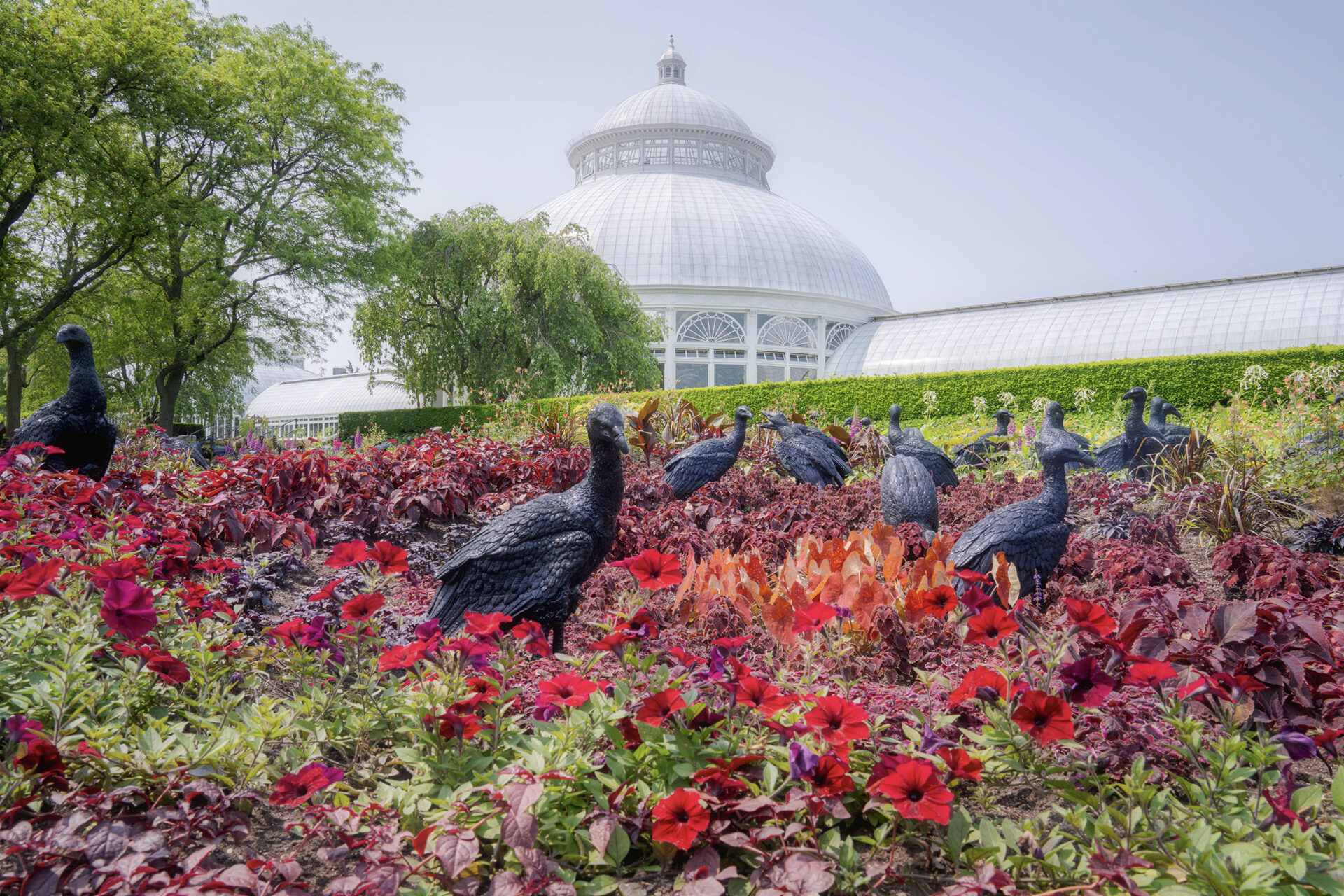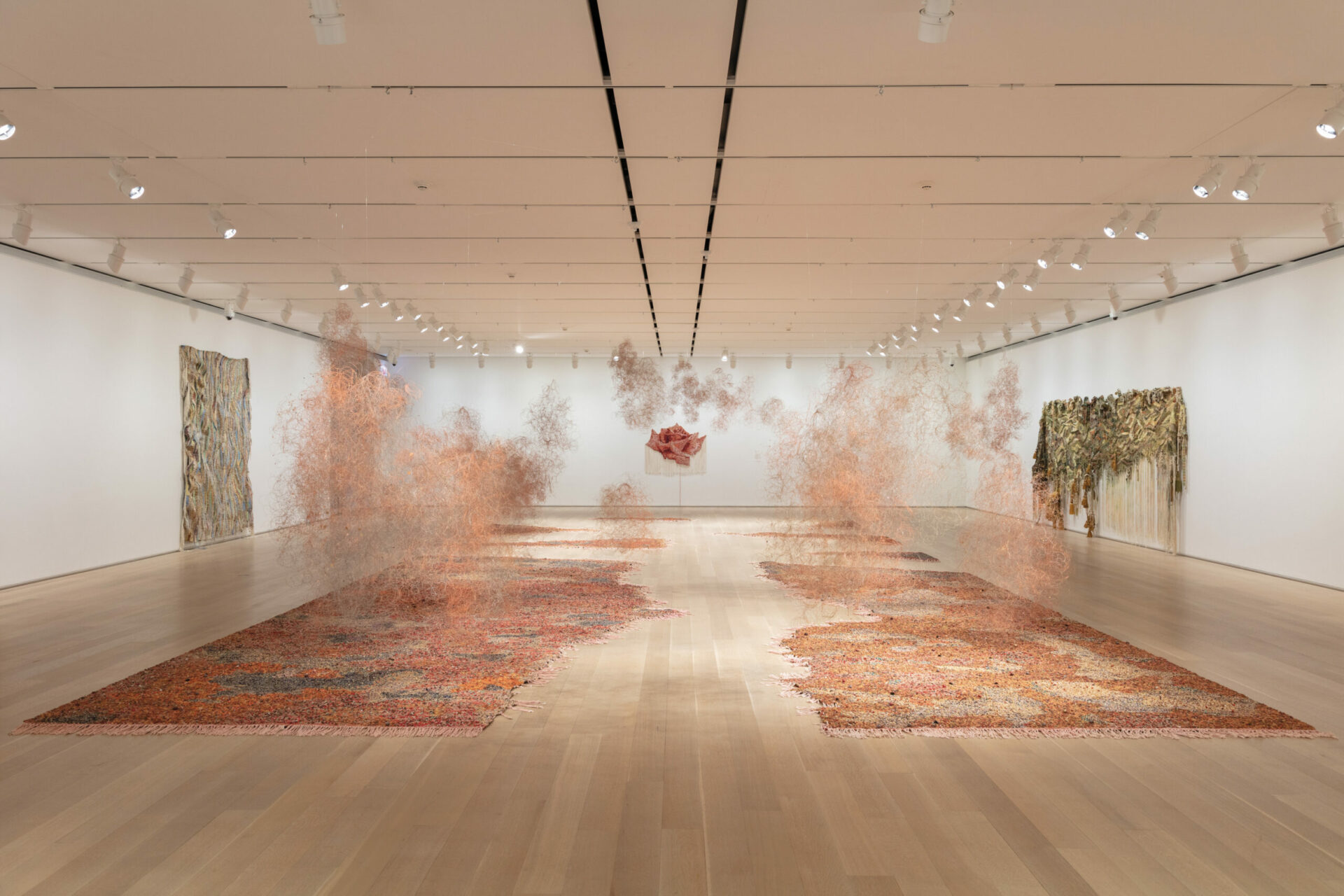Ebony G. Patterson
…things come to thrive…in the shedding…in the molting…
May 27–October 22, 2023

Photo: courtesy of The New York Botanical Garden
May 27–October 22, 2023
[En anglais]
Botanical gardens are a very special kind of institution. Like natural history museums, they have their roots firmly planted in colonialist logic and practices of extraction, cataloguing, and preservation. But botanical gardens are, in a way, more complex. The general public thinks of them mostly in terms of recreation rather than education. Of course, plant lovers obsessed with specific species and rare blooms flock there too, but the vast majority of visitors are hoping for a nice stroll around a manicured re-creation of the Garden of Eden. There are two other sides to botanical gardens that most people are unaware of—the library and the herbarium. These are often specialized and extremely important assets laid out and used predominantly by researchers. In this sense, botanical gardens are similar to natural history museums: they are archives of the living in which everything is dead. They are the materialization of the foundational paradox upon which our knowledge of nature in the West has, for better or worse, developed.
It is hard to exhibit great contemporary art in these kinds of institutions, where audiences come to switch off rather than engage with cultural politics. More recently, natural history museums such as the Smithsonian in Washington, DC, have mounted challenging exhibitions, but the task has proved much harder for botanical gardens. Among the most noteworthy, certainly, is The New York Botanical Garden (NYBG) in the Bronx. Having hosted Kusama: Cosmic Nature in 2021, Georgia O’Keeffe: Visions of Hawai’i in 2018, and Frida Kahlo: Art, Garden, Life (2015), the NYBG has consistently raised the bar in the “nature institution art exhibition” game. Its latest offering, an ambitious and challenging large-scale project by the Jamaican contemporary artist Ebony G. Patterson, has set a new standard.
Créez-vous un compte gratuit ou connectez-vous pour lire la rubrique complète !
Mon Compte


